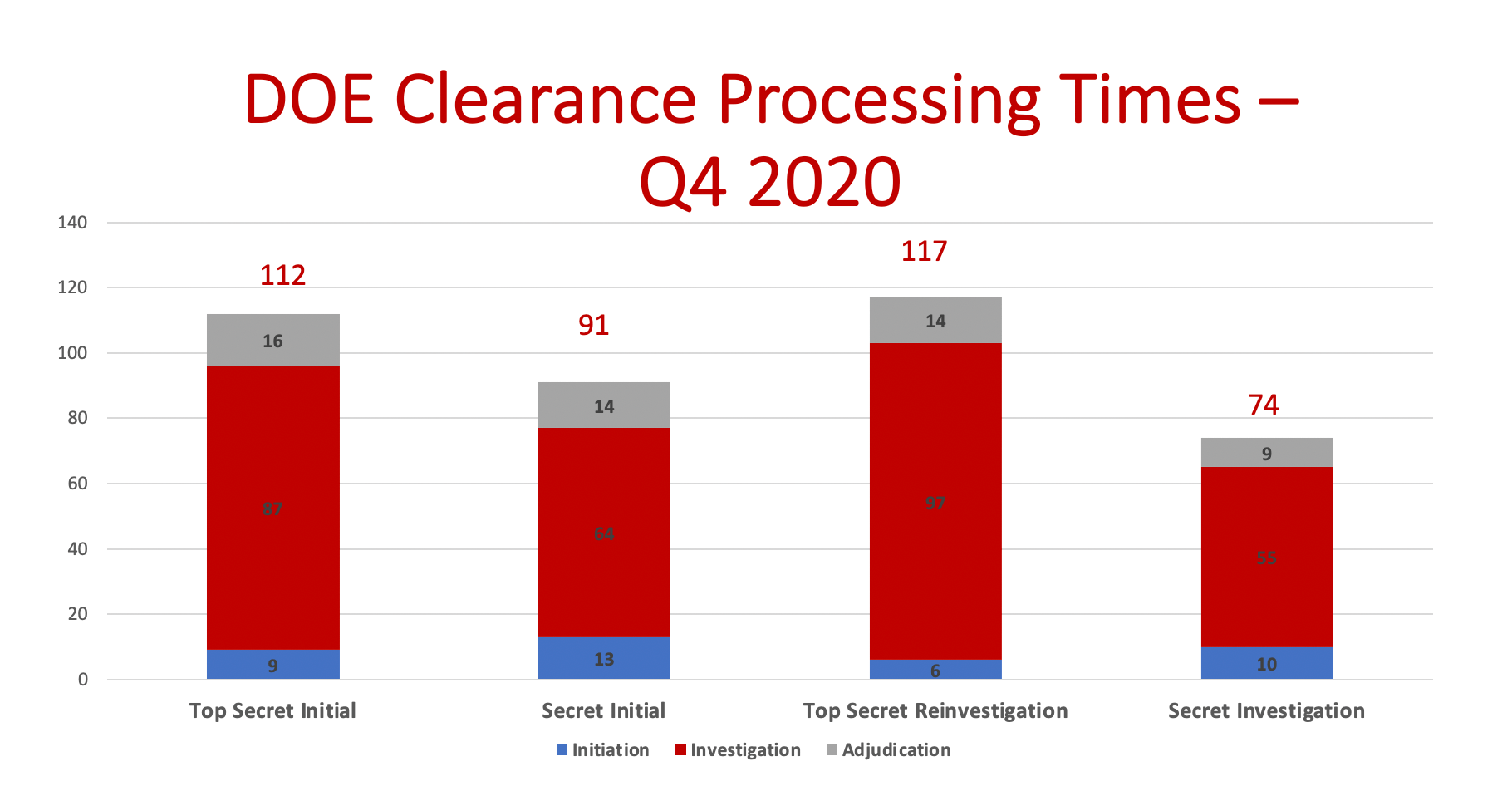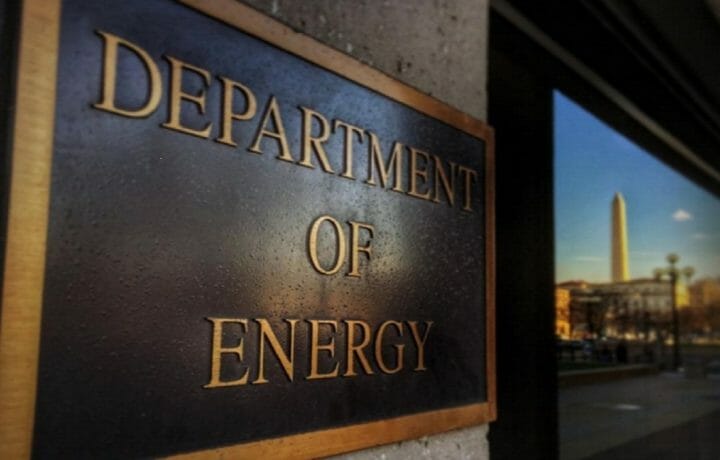No agency has been immune to the effects of the global pandemic. In FY 2020, the Department of Energy (DOE) reduced the number of days it takes for an initial or reinvestigation to move through the system. In Q1, DOE processed 3,358 initial clearances and 3,353 reinvestigations, but in Q4, the DOE processed 1,797 initial clearances and 2,360 reinvestigations. Processing times may be improving, but the department is also experiencing fewer cases.
Department of Energy FY20 Q4 Processing Times
The chart below shows the processing times for the DoE’s Fiscal Year (FY) 2020 4th quarter by security clearance level for the three steps: application, investigation and adjudication, along with reinvestigations.

The Numbers
The investigation period is the most time-intensive part of the process. In Q1 before COVID-19 was a factor, investigations took even longer, with the Q1 Top Secret reinvestigation process taking 191 days. Of course, DOE reported 3,041 adjudication actions reported in Q1, compared to the 2,049 Top Secret reinvestigation adjudication actions reported in Q4. DOE experienced a little bump in Q2 as they adjusted to the pandemic curveballs. Q2 Top Secret reinvestigations maxed out at 276 days, with both investigation and adjudication taking longer than usual.
Numbers across the board have stayed almost equal to Q3 or reduced, proving that the spike in Q2 was simply an adjustment period. For both initial and reinvestigations, there’s an average of a 20 day difference between the investigation for Top Secret and Secret clearances. On average, DOE Secret clearances take approximately 20 days less time than Top Secret. However, the adjudication timeline difference averaged closer to 5 days less time for Secret than Top Secret.
DOE Clearances and REciprocity with the DoD
Cybersecurity threats have the potential to shut down whole energy delivery systems, such as gas or electric grids, making it important for DOE to process clearances quickly and efficiently. While the DOE has worked to reduce its backlog and speed up its clearance processing timelines, it’s apparent that when the demands rise, the processing time slows – regardless of a pandemic. But Q4 has proven the department’s ability to adapt to the restrictions of COVID-19.
While agencies like the DoD use the Joint Personnel Adjudication System (JPAS), DOE uses the Central Personnel Security Index (CPCI). However, according to the DOE, “If you have a current, Top Secret security clearance, and your investigation was completed within the previous five years, you won’t need to have another investigation in order for DOE to grant you an access authorization. The access authorization will be granted based on “reciprocity:” the principle that a security clearance or access authorization at the same level granted by any authorized Federal agency must be recognized and accepted by all other agencies without making the individual complete new forms or undergo a new investigation.”
Understanding the L’s and Q’s
Ideally, with the concept of reciprocity, a final Secret Clearance would translate to an L access authorization, and final Top Secret clearance with the DoD should translate to a job at the DOE with a Q access authorization. If you are applying for a position with a higher clearance level than what you have, then you would need a new investigation, since a more extensive investigation is required for a higher clearance level.
It may seem confusing that DOE uses different terms for Top Secret, Secret, and Confidential security clearances; however, DOE cites the need for different terms due to the fact that the department is granting access to Restricted Data and special nuclear material. So, in order to distinguish the differences in classified information, the DOE uses different terminology: Q for Top Secret and L for Confidential and Secret. However, should a clearance holder require access to Secret Restricted Data, DOE grants a Q access authorization.




